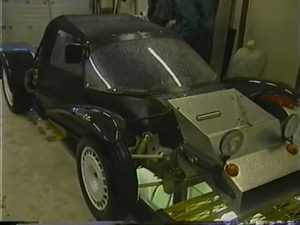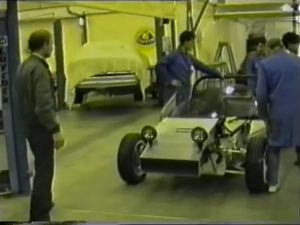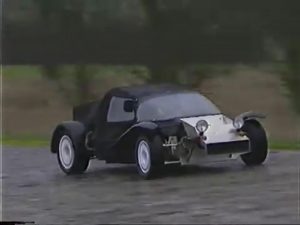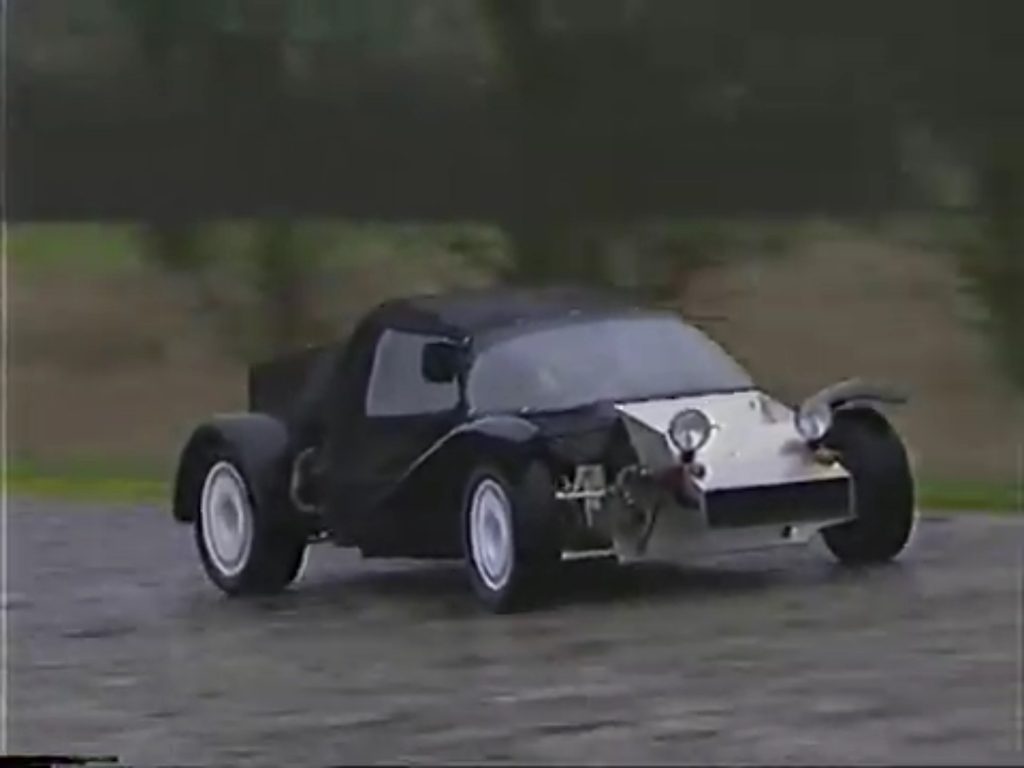On the 24 December 1994, in one small workshop at Lotus Car’s Hethel HQ, a handful of engineers were working hard to achieve a significant milestone before the factory closed for the Christmas break. The target, which was primarily motivational and psychological, was to complete the build of the first prototype of the Lotus Elise – aka Proto One – and drive it around the famous Hethel test track. The task, as Lotus recount below, continued late into Christmas Eve.
The first chassis had arrived from the supplier in Denmark a month before. This was before manufacturing of the extruded and bonded chassis started in the UK and became Lotus Lightweight Structures, our sub-division based in Worcester. Like all ‘technology proofs’ at Lotus, the chassis had been put on display at Hethel for half a day so that staff could view it. Weighing only 68kg, it was viewed like a spaceship had landed, with engineers, technicians, sales people and management all gathered around. People couldn’t resist stroking, tapping and caressing the smooth silver anodised structure. A few immediately identified it as being not just innovative for Lotus but revolutionary for the industry. The chatter continued for days afterwards.
Over the following weeks, the Project M111 team worked long hours to build the car and get it running by Christmas Eve. At 6pm, when everyone should have been at home with their families, there were still about 50 items that needed to be done to do to get the car running. It seemed like an impossible task, but the question was posed amongst the team – was there anything that couldn’t be completed by midnight? There wasn’t, so the team pushed on.

Richard Rackham, vehicle architect for the Lotus Elise at the time and now head of vehicle concepts, remembers: “The excitement had been building through the day, lots of people were guessing how much the running car would weigh and we had a little sweepstake going. The enthusiasm of the technicians, I’ve never known anything like it. We were all getting stuck in as we wanted this thing to roll. And at the time we even thought that it didn’t look half-bad – because love is blind – but looking at Proto One now, it was hideous!”
The car was essentially a rolling Elise chassis with Lotus Seven-style mudguards, a rudimentary windscreen, two seats and a pair of frog-eye headlights standing proud at the front. It was certainly not clad in the Elise’s clam-shell bodywork that has now become iconic, nor did it have any disguise, but it was technically very attractive.
It was well into the evening when the list of jobs was complete. Rackham and Tony Shute, project manager for Project M111, put on their crash helmets, headed out into the dark and on to the Lotus test track. “It was icy, but a brilliant moonlit night; it was one of those magic moments,” reflects Rackham. First impressions were that it was very quick, because of the torque of the engine and the obvious lack of weight. And, of course, as it was a Lotus, the steering response was excellent.
Little evidence exists of that Christmas Eve, save for some grainy VHS video-cam footage. The only shots of the car driving on the test track – it was very dark after all – were captured on the Lotus CCTV cameras. Two security officers in the Lotus Gate House tracked the car running its laps, firstly for safety but also such was the level of enthusiasm for the new car across the business
The car returned to the workshop and most of the team went to the pub for a celebration drink. They knew a significant milestone had been accomplished on the last working day of 1994, but also that there was a huge amount of work to do before delivery to the first customers 18 months later.
Almost exactly 26 years after that Christmas Eve, Rackham recollects, “It was an amazing period, a real learning experience of what could be done, in a short time with the right team. We were only around 11 months into the project and already had a running prototype. A huge achievement for any company, but this was with a totally new vehicle construction technology. So not only were we developing a new car, we were in parallel conducting pioneering R&D into a technology that is now omnipresent in the automotive industry. And we were testing for the first time on a frosty Christmas Eve.”


